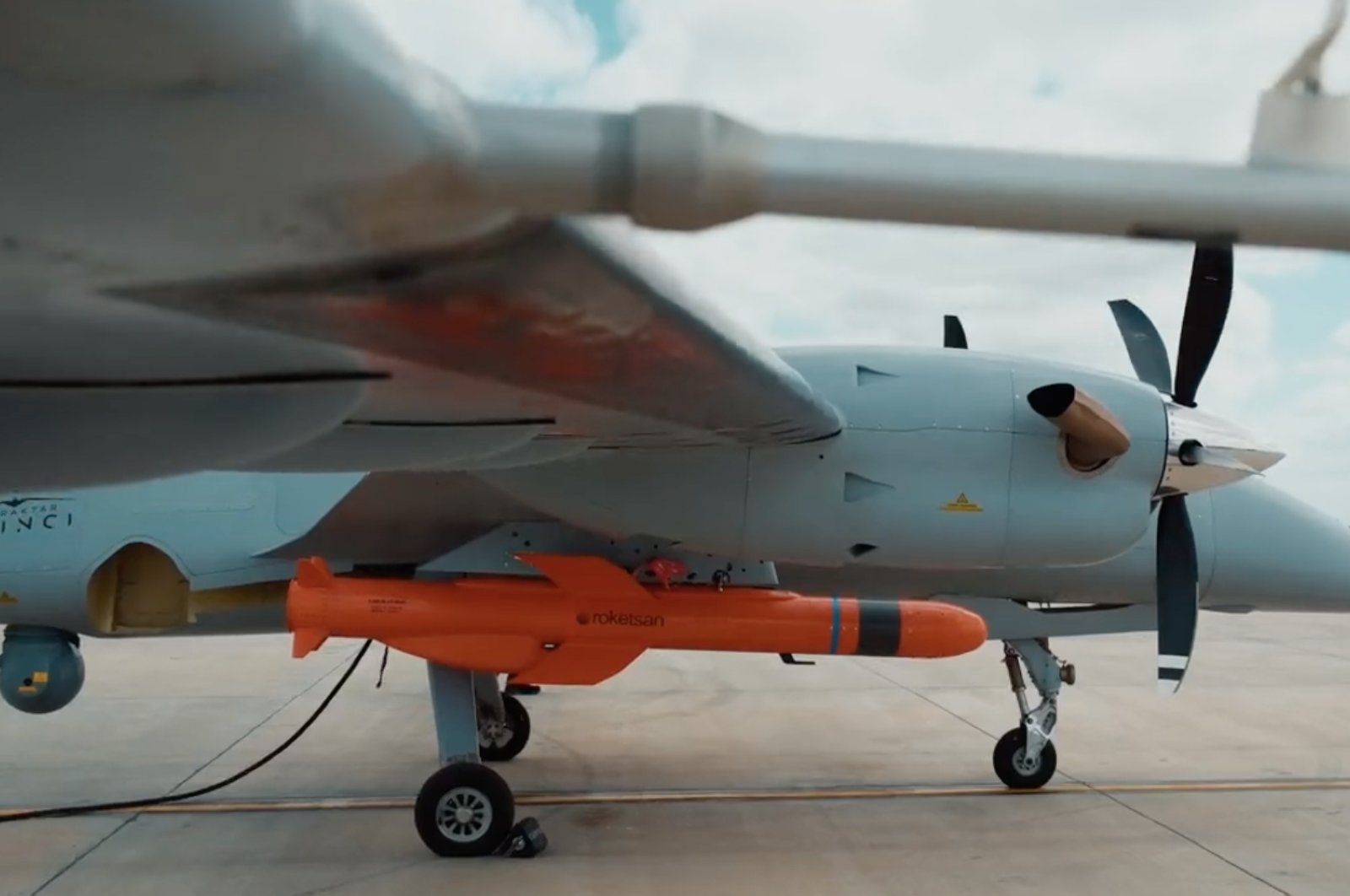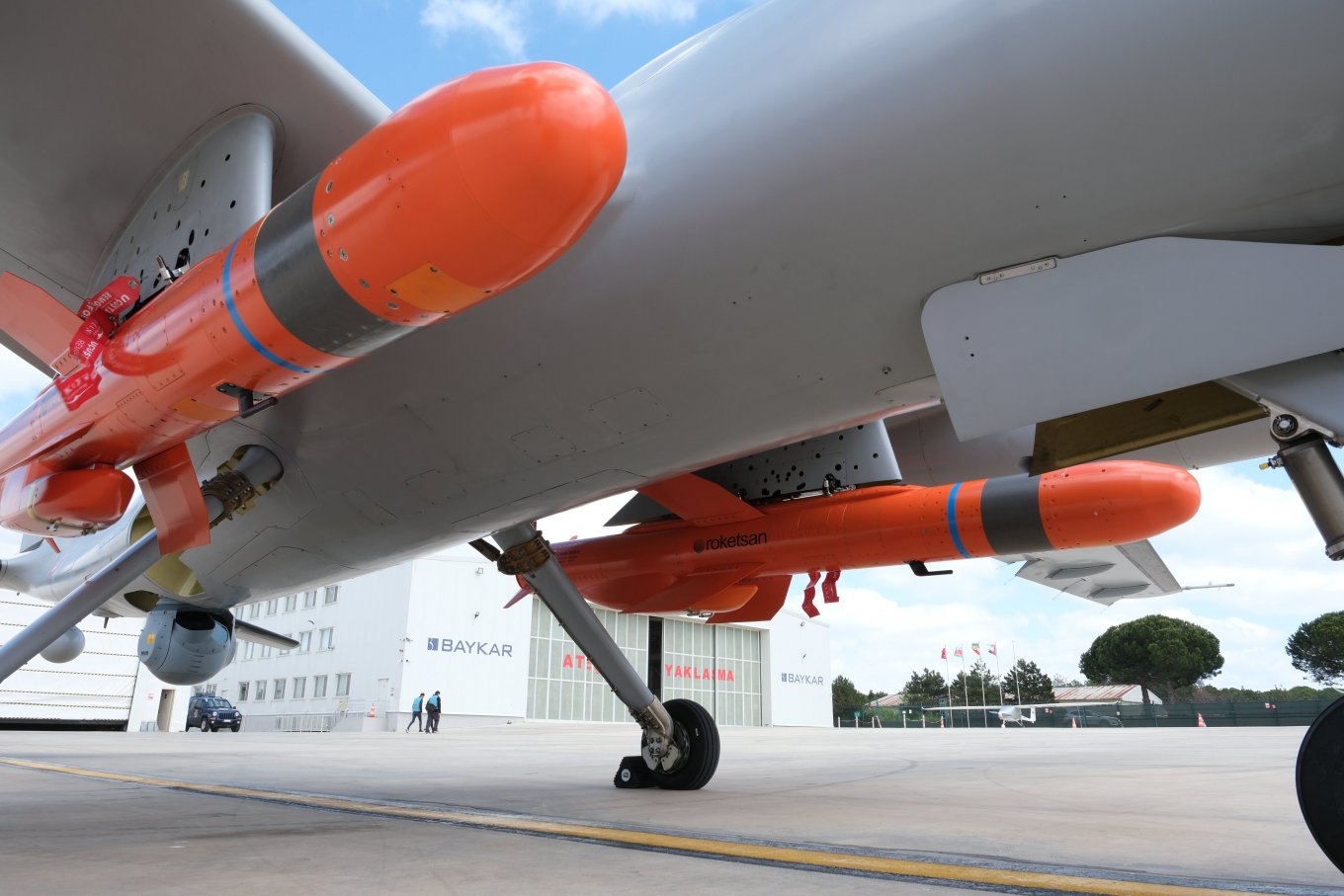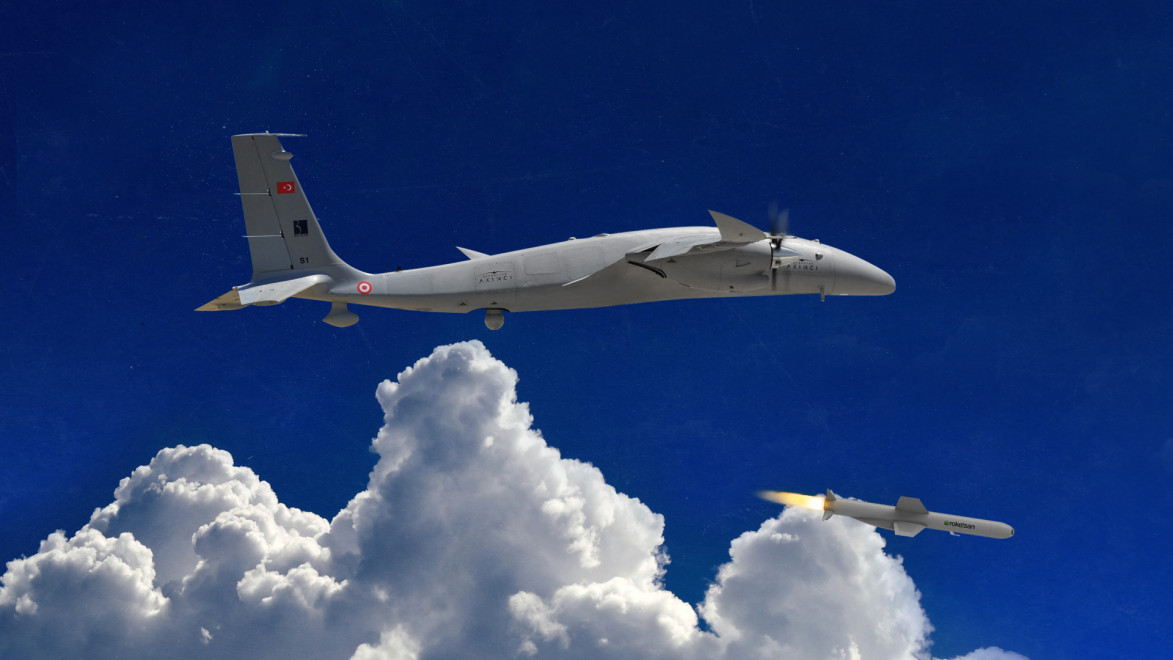Türkiye Tests ÇAKIR cruise missile fired from AKINCI TİHA.
Çakir is a modern cruise missile developed by Turkey's defense industry and was recently test-fired from the Akinci Tiha (Turkish: Bayraktar Akinci Tactical UAV), a large drone designed and produced by the country's leading drone manufacturer Baykar.
The successful test-firing of the Çakir missile from the Akinci Tiha is a significant milestone for Turkey's defense industry, as it demonstrates the country's capability to produce advanced unmanned aerial systems (UAS) and precision-guided munitions.
The Akinci Tiha is a high-altitude, long-endurance drone capable of conducting a wide range of missions, including intelligence, surveillance, and reconnaissance (ISR), target acquisition, and strike missions. It has a maximum takeoff weight of 5,500 kg, a wingspan of 20 meters, and a range of up to 6,000 kilometers.
Baykar’s UAV integrated with domestic missile - Türkiye News
Baykar’s UAV integrated with domestic missile
ANKARA

Akıncı, the armed unmanned aerial vehicle developed by Turkish defense company Baykar, has achieved a precise hit on a target at sea from a distance of 100 kilometers in a test launch using the domestically developed Çakır cruise missile.
As part of the Bayraktar Akıncı Project under the leadership of the Presidency of Defense Industries, integration efforts for new ammunition and systems continue, with a new landmark achieved with the integration of the Çakır cruise missile.
The unmanned aerial vehicle conducted another test with the missile developed nationally by Roketsan at the Akıncı Flight Training and Test Center in the northwestern province of Tekirdağ’s Çorlu district.
Taking off with the Çakır missile, Bayraktar Akıncı flew to the northern province of Sinop for a long-range firing test. Fired from the unmanned aerial vehicle at the Sinop firing range from a distance of 100 kilometers, the Çakır cruise missile hit the target over the Black Sea at a speed of 800 km/h with precise accuracy.
The Bayraktar Akıncı UAV, which entered the inventory of Azerbaijan, had its first flight on Feb. 9, witnessed by Azerbaijani President İlham Aliyev and Baykar Chairman Selçuk Bayraktar. The export and cooperation agreement with Saudi Arabia in 2023 became the largest single export agreement in the history of the Turkish defense and aerospace industry.
Turkish UCAV Akıncı fires Roketsan cruise missile in global 1st | Daily Sabah
The Turkish defense industry giant Roketsan-made Çakır cruise missile was successfully fired from the state-of-the-art unmanned combat aerial vehicle (UCAV) Akıncı.
 |
| A Çakır cruise missile is seen deployed under the Akıncı UCAV before being fired in an undisclosed location, May 11, 2023. (Courtesy of SSB) |
The Çakır was deployed at an altitude of 7,000 meters, marking its inaugural flight with the indigenous turbojet engine KALE KTJ-1750.
Ismail Demir, head of the Presidency of Defense Industries (SSB) shared the images of the test-firing of the Çakır missile on his social media account.
“For the first time in the world, a cruise missile was fired from a UCAV,” he wrote.
Demir said that the missile was fired with an engine whose critical components were domestic and hit the target with pinpoint accuracy, congratulating the local defense industry.
The Çakır cruise missile is a cutting-edge weapon system designed to enhance the capabilities of the armed forces across various platforms including land, sea and air.
Leveraging state-of-the-art features and an effective warhead, the Çakır cruise missile empowers Roketsan to shape the battlefield with innovative technologies.
This versatile missile can be launched from a range of platforms such as fixed-wing and rotary-wing aircraft, UCAVs, armed unmanned sea vehicles (AUSVs), tactical wheeled land vehicles and surface platforms.
Its operational flexibility equips users with an array of options to engage both land and sea targets effectively.
With a range exceeding 150 kilometers (90 miles), the Çakır cruise missile enables precise strikes against surface targets, land and shoreline targets, strategic land installations, expansive areas, and even fortified caves.
With its advanced intermediate stage and terminal guidance systems, Çakır is able to engage its targets with high precision in all weather. Thanks to the network-based data link, it also allows target change and task cancellation depending on user selection while advancing to the target.
Next-Level Arsenal for Akinci: Unmanned Aircraft Vehicle Successfully Launches Cakir Cruise Missile | Defense Express
Turkish unmanned aerial vehicle Akinci successfully launched the Çakır cruise missile, equipped with the domestic turbojet engine KTJ-1750 from Kale Arge, developed by Roketsan. The Chairman of the Presidency of Defence Industries of the Republic of Turkey (Savunma Sanayii Başkanlığı, SSB), Ismail Demir, shared the news on his Twitter account.
"All critical components of Çakır, released from AKINCI TIHA, were propelled by a domestic engine and hit the target with high precision," the statement said.

Çakır missile is a state-of-the-art Turkish development, first introduced in 2022. It is designed to engage ground and surface targets. The missile can fly close to the water surface, has terrain-following capability, and features the option to update its route, change targets, or abort the mission during flight. It can also maneuver as required.

The tactical and technical specifications of this missile are as follows: length - 3.3 m, total weight - 275 kg, with a warhead weighing 70 kg. It has a range of 150 km, a cruise speed of 0.75-0.85 Mach, and can be equipped with fragmentation, thermobaric, or armor-piercing warheads.
It's worth noting that this is the second cruise missile associated with Akinci unmanned aerial vehicle that has made headlines recently. Previously, we reported on the official demonstration of the mini cruise missile Kemankes by the Turkish Company Baykar, designed for integration with Bayraktar series UAVs, including TB2, TB3, and Akinci.
This cruise missile is capable of engaging targets up to 200 km away, and weighs 35 kg, with a warhead weighing 6 kg. The first missile launch is expected within 1-2 months, and serial production is planned to commence by the end of this year.


No comments:
Post a Comment